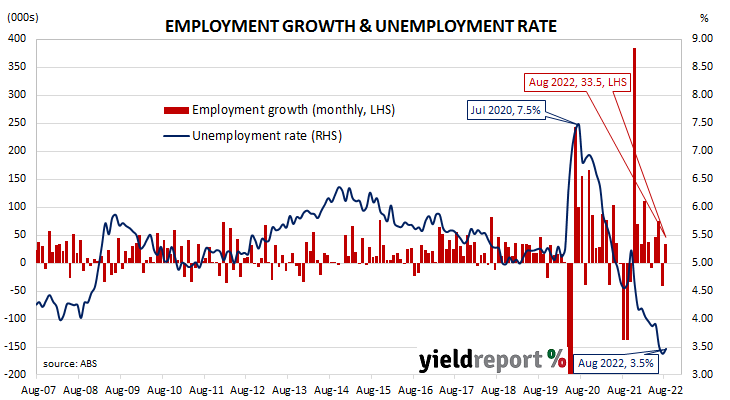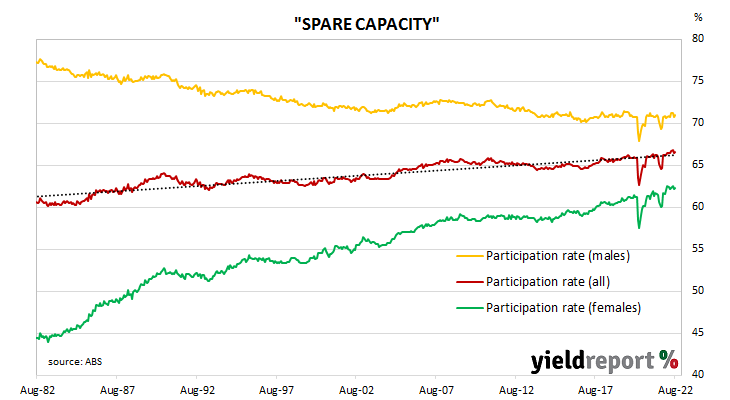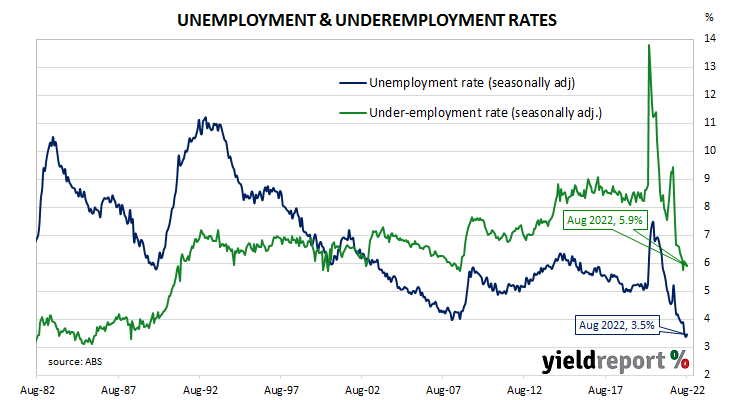Summary: Employment up 33,500 in August, slightly less than expected; higher jobless rate not sign of weakness; participation rate rises; jobless rate ticks up to 3.5%; more part-time, fewer full-time jobs; aggregate work hours up 0.8%; underemployment rate down from 6.0% to 5.9%.
Australia’s period of falling unemployment came to an end in early 2019 when the jobless rate hit a low of 4.9%. It then averaged around 5.2% through to March 2020, bouncing around in a range from 5.1% to 5.3%. Leading indicators such as ANZ’s Job Ads survey and NAB’s capacity utilisation estimate suggested the unemployment rate would rise in the June 2020 quarter and it did so, sharply. The jobless rate peaked in July 2020 but fell below 7% a month later and has since trended lower.
The latest Labour force figures have now been released and they indicate the number of people employed in Australia according to ABS definitions increased by 33,500 in August. The rise was slightly less than the 37,500 increase which had been generally expected but it contrasted with July’s 41,000 fall.
“While Australia’s unemployment rate edged up 0.1ppt to 3.5% in August, this reflected an increase in participation rather than being a sign of weakness,” said ANZ senior economist Catherine Birch.
Domestic Treasury bond yields rose on the day, especially at the short end. By the close of business, the 3-year ACGB yield had jumped 17bps to 3.46%, the 10-year yield had gained 8bps to 3.72% while the 20-year yield finished 3bps higher at 3.98%.
In the cash futures market, expectations of higher rates firmed. At the end of the day, contracts implied the cash rate would rise from the current rate of 2.31% to 2.645% in October and then increase to 3.045% in November. May 2023 contracts implied a 3.845% cash rate and August 2023 contracts implied 3.785%.
The participation rate increased from July’s figure of 66.4% to 66.6% as the total available workforce increased by 47,600 to 14.079 million while the number of unemployed persons increased by 14,100 to 487,700. As a result, the unemployment rate ticked up from 3.4% to 3.5% as the higher jobless figure slightly outweighed the larger workforce.
The aggregate number of hours worked across the Australian economy increased as 58,800 residents gained part-time positions and 25,300 residents lost full-time positions. In percentage terms, the total number of work hours rose by 0.8% after falling by the same percentage in July. On a 12-month basis and after revisions, aggregate hours worked increased by 7.9% as 55,100 more people held part-time positions and 515,200 more people held full-time positions than in August 2021.
In recent years, more attention has been paid to the underemployment rate, which is the number of people in work but who wish to work more hours than they do currently. August’s underemployment rate declined from 6.0% to 5.9%, 0.2 percentage points above May’s recent low of 5.7%.
The underutilisation rate, that is the sum of the underemployment rate and the unemployment rate, has a strong correlation with the annual growth rate of the ABS private sector wage index when advanced by two quarters. August’s underutilisation rate of 9.4% corresponds with an annual growth rate of about 4.7%.




